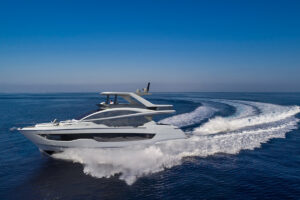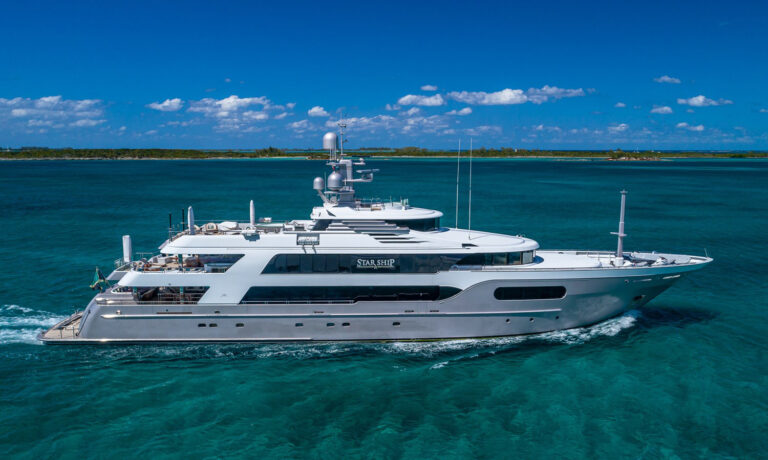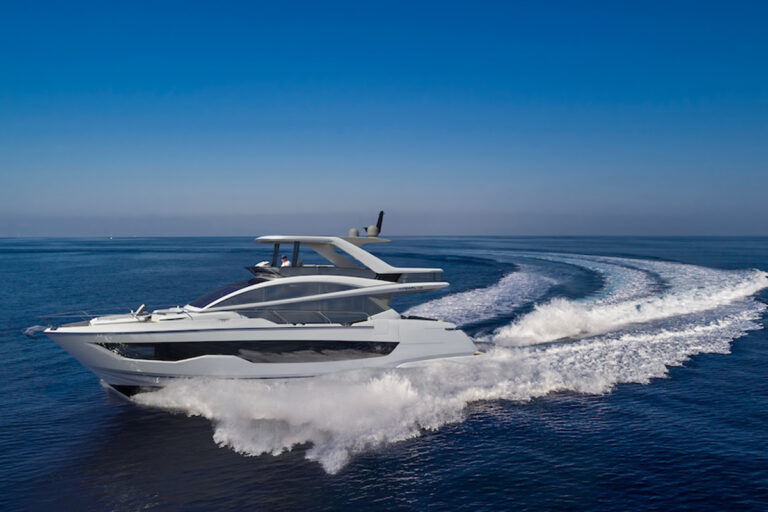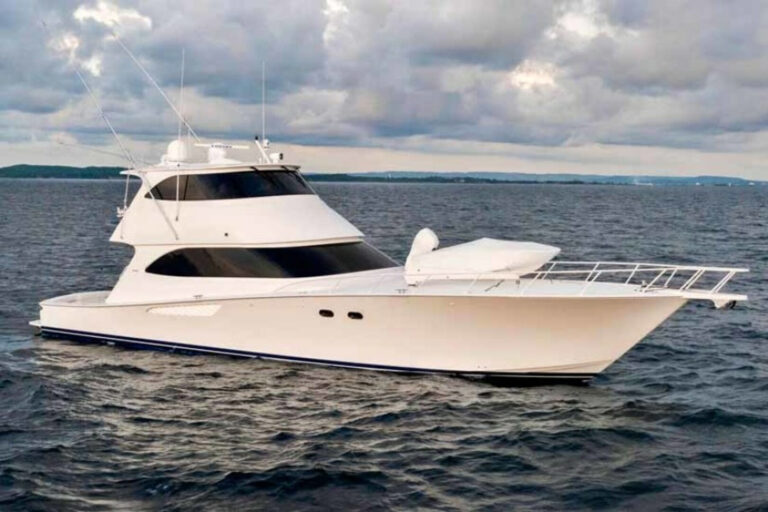Although the new Swan 45 shares styling themes with her ancestors, she is not the same type of boat. She is the progeny of the high-tech and rapid Swan 70 and 80, luxurious light-displacement cruising/racing yachts, also designed by German Frers. Like these semi-custom yachts, the 45 has an appetite for nautical miles, whether the owners are racing or cruising. In a way, the story of the Swan 45 is the story of the Nautor Group and its take on the future of the Swan line.
Swan made its reputation in the 1970s and 1980s on the bottom of its midsize yachts-robustly built, well designed, handsome outside and luxurious inside. They were fast, too, having been drawn by Sparkman & Stephens, Ron Holland and German Frers. A Swan 65 won the Whitbread crewed race around the world in 1973/74, a great many owners race their yachts in the Swan regattas staged in the Med and in U.S. waters, and Swans showed well in the Admiral’s Cup. Tapping into the popularity of offshore one-design classes, Swan developed the 45 as a class boat, and the company invited some owners to participate in the development process.
Tom Stark, an avid racer and family man living in Connecticut, is one of the owner/developers and was among the first sailors in the United States to take delivery of a 45. The Swan office in Stamford, Connecticut, invited me to sail with the crew during a tune-up session. They would be testing a variety of headsails for the next race.
Stark’s boat, Rush, nestled in her slip holding her own among a fleet of Farr 40s and the like, which tend to wear their purpose all over the topsides. Rush leaves a person guessing-more Pierce Brosnan as 007 than Arnold Schwarzenegger as the Terminator. Decks paved in honey-color teak, she appears dressed for a party in Newport, Porto Cervo or Long Beach. A blister of a cabin trunk emerges from her foredeck and grows gracefully to its terminus at the cockpit. Although this trunk recalls those of midsize Swans from the 1980s, it’s softer and higher. Narrow and nearly rectangular portlights-two on each side-stretch fore and aft, disguising the height of the trunk while they light the saloon.
Swan’s goal for the 45 from the outset was simplicity and ease of operation, cruising or racing. Following the trend made popular by Wally Yachts, Swan cleared the decks of clutter. Most of the lines run in tunnels beneath the deck and coachroof. The genoa track snuggles closely to the trunk cabin-off the beaten path between the cockpit and the foredeck-and the line that adjusts the sheet lead runs aft through fairleads on the sides of trunk cabin. The continuous mainsheet, which prevents trimming imbalance side to side, runs from the traveler up to and along the length of the boom. At the forward end of the boom, it angles down and outboard to enter a tunnel under the deck. It emerges from the deck right forward of a winch on the cockpit coaming each side of the helm. The mainsheet winches and traveler are within reach of the helmsman. The primary winches are forward near the companionway.
The cockpit sole is flat, roomy and generally uncluttered, which serves the cruiser as well as the racer. Although the transom is open aboard Rush, Swan offers a drop-in closure for cruising folk who need the security it provides.
A 60-inch wheel bisects the after portion of the cockpit. We don’t readily associate a 60-inch wheel with cruising yachts, but this one links to a wonderfully smooth and accurate manual system, comprising Vectran cables, a quadrant under the compass, plus easy-turning sheaves. This big wheel lets the helmsman sit outboard either side of the cockpit to get the view he wants. I prefer the leeward side most times, so I can see the telltales on the genoa. When I stood on the high side aboard Rush and the leeward rail dipped toward the water under a press of 3DL, I missed having a foot brace on the sole each side of the helm.
Swan also carried the theme of simplicity into the rig. Two sets of swept spreaders mind the mast and, combined with a full-beam staying base, eliminate the need for running backstays. A hydraulically adjustable permanent backstay controls the tension on the forestay and bend in the carbon mast. A tuning device that you rarely, if ever, find on a cruising boat is an adjustable mast step. Hidden in the bilges of the 45 is a simple jacking system that lets the crew move the foot of the mast fore and aft. This changes the relationship between the sail’s center of effort and the center of lateral resistance created by the hull and the appendages. Raking the mast forward or aft changes the balance of these two forces, which alters the characteristics of the helm, creating more or less weather helm. Too much weather helm develops an excessive amount of drag relative to the lift. Lee helm, opposite of weather helm, doesn’t create any lift and encourages the boat to run off in the gusts.
Rush‘s crew had tuned her well under the working sails, which let me quickly find the groove and keep her there in the winds of 8 to 10 knots. The steering wheel telegraphed to my fingertips the action at the rudder, which prevented me from over-steering and losing the wind.
After the crew hanked on the A1 jib-head reaching sail, we were able to make wind speed in the light conditions. Rush tacked and jibed like the spirited performer she is, asking for the helmsman’s undivided attention to keep her from exiting the tack at too high an angle or falling off too much at the end of a jibe.
Fans of the early Swans ought to feel at home in the forest of teak and simple fabrics belowdecks. Unlike high-gloss finish, which makes me afraid to touch anything, the hand-rubbed satin finish on the 45 encourages the casual approach to cruising. I wouldn’t mind a few dings and scratches in the Swan. The off-white vinyl overhead brightens the interior and actually sets the teak aglow when the sun shines through the hatches and portlights.
You won’t find any gimmicks or surprises in the arrangement plan. This traditional approach succeeds now as well as it did 75 years ago because it works. Swan provides generous fiddles on the counters and large radii on the corners of the furniture. The wood shop builds a lot of the furniture outside the hull and installs it before the deck goes on. A dedicated wet locker occupies the space abaft the nav station on the starboard side.
In spite of Swan’s progress toward high-tech composites, the company has yet to build a cored bottom. The 45 uses a balsa core in the deck and topsides, and a carbon-fiber reinforced solid laminate in the bottom.
Swans generally offer good value, in part because the company has maintained a healthy price for previously owned boats. I used to think Mercedes when I considered a Swan, but now I have to add the suffix AMG-the automaker’s hot rod division.
Contact: Oy Nautor Ab, (011) 3586 760 1111; email@nautor-swan.com; www.nautorgroup.com.









